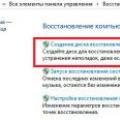Manufacturer: PA "Radio Engineering", Riga.
Purpose and scope : for high-quality reproduction of music and speech programs in stationary living conditions. Acoustic system“S-90”, developed in 1975, is the first domestic system that meets the requirements of international documents for Hi-Fi equipment. Later models of this speaker “S-90B” and “S-90D” are distinguished by an expanded range of reproduced frequencies. Introducing an indication of electrical overload of loudspeakers and a new appearance. Recommended power of high quality household amplifier 20 – 90 W. 35 AS-212 “S-90” and 35 AS-012 “S-90”, similar to AS, the difference lies in GOST.
Characteristics
3-way floorstanding speaker with bass reflex
Frequency range: 25 (-15 dB) – 25000 Hz
Frequency response unevenness in the range 100 – 8000 Hz: ±4 dB
Sensitivity: 85 dB (0.338 Pa/√W)
Directivity at angles of 25±5° in the horizontal plane and 7±2.5° in the vertical plane, from the frequency response measured along the acoustic axis of the speaker:
in the vertical plane: ±8°
horizontal: ±6°
Harmonic distortion of speakers at a sound pressure level of 90 dB at frequencies:
250 – 1000 Hz: 2%
1000 – 2000 Hz: 1.5%
2000 – 6300 Hz: 1%
Resistance: 4 ohms
Minimum impedance value: 3.2 ohms
Rated power: 35W
Maximum (nameplate) power: 90 W
Short-term power: 600 W
Weight: 23 kg
Dimensions (HxWxD): 710x360x285 mm
Installed speakers:
LF:
MF:
HF:

Design
 The body is made in the form of a rectangular non-separable box made of chipboard, veneered with valuable wood veneer. The wall thickness is 16 mm, the front panel is plywood 22 mm thick. At the joints of the housing walls, elements are installed on the inside that increase the strength and rigidity of the housing.
The body is made in the form of a rectangular non-separable box made of chipboard, veneered with valuable wood veneer. The wall thickness is 16 mm, the front panel is plywood 22 mm thick. At the joints of the housing walls, elements are installed on the inside that increase the strength and rigidity of the housing.
The heads are each framed with decorative black plates, made by stamping from aluminum sheet, with four mounting holes. The midrange head is isolated on the inside from the total volume of the housing by a special plastic casing in the shape of a truncated cone. The LF head is located on the front panel along a vertical axis, and the MF and HF heads are shifted relative to this axis to the left and right. On the front panel there are also knobs for adjusting the midrange and treble levels, and in the lower part there is a plastic overlay panel with a nameplate and a rectangular hole 100X80 mm, which is the bass reflex output. The nameplate shows frequency response curves corresponding to various positions of the level controls, as well as the name of the speaker and the manufacturer's logo. In addition, the front panel has bushings for attaching a decorative frame with fabric. On the back wall, in the lower part, a block with terminals is attached. Each head on the front panel side is protected by a blackened metal mesh.
 The internal volume of the speaker is 45 liters. To reduce the influence on the frequency response of sound pressure and the sound quality of the speaker resonances of the internal volume of the housing, it is filled with a sound absorber, which is mats of technical wool, covered with gauze.
The internal volume of the speaker is 45 liters. To reduce the influence on the frequency response of sound pressure and the sound quality of the speaker resonances of the internal volume of the housing, it is filled with a sound absorber, which is mats of technical wool, covered with gauze.
Inside the case, on one board, there are electrical filters that ensure separation of the speaker bands. The crossover frequencies between LF/MF are 750±50 Hz, between MF/HF – 5000±500 Hz. The design of the filters and the overload indication unit uses resistors such as BC, MLT, SP3-38B, S5-35I, PPB, capacitors such as MBGO-2, K50-12, K75-11 and inductors on plastic cast frames.
The package included: four plastic feet that can be attached to the base of the case; removable decorative frame, covered with knitted fabric with high acoustic transparency.



Whatever the snobs say, the Soviets were truly high level. Even now they can bypass many modern beepers. And after appropriate modifications, even budget speaker systems from Yamaha cannot compare with them. And now we will look at the legendary Radiotehnika S90. This is a symbol Even abroad they celebrated high quality this (at one time). Therefore, it makes sense to consider these columns. Moreover, many people still use them to this day.
A little history
Radiotehnika S90 speakers were first released in the early eighties of the last century. They were produced by a plant located in Latvia, which became an additional incentive for citizens to buy them. Despite the rather high price, the speakers sold like hotcakes. People saved for a long time, did not eat enough, hiccupped them wherever possible. They even purchased used speaker systems. Just to decorate your closets with “Radio Engineering”.
Nowadays, many audiophiles are still chasing this speaker system. Speakers "Radio Engineering" - the dream of every connoisseur high-quality sound. But now they can only be purchased on the secondary market. And it’s far from a fact that their condition will be acceptable (they do. However, this acoustic system can give a head start to many modern speakers. And after appropriate modifications, it completely turns into Hi-End class acoustics. And this is a completely different level.
Appearance and Design
Looks impressive from Radiotekhnika. These are very large speakers. Each of them weighs about 15-20 kilograms. This is not to mention the fact that carrying them is not very convenient due to the bulky and bulky case. The front panel (like the entire body) is covered with veneer. There are several color combinations. The speakers are covered with a metal mesh. Only the tweeter is not covered with protection. This is, of course, good, but it does not have the best effect on the acoustic properties of the speakers. However, the design is quite acceptable. Much better than other speakers of “clumsy” Soviet production.

On the right side of the mid-frequency and high-frequency speakers there are two operating mode switches. It is unknown why they were placed here. A normal amplifier itself is capable of switching modes. And the job of speakers is to reproduce sound correctly. Nevertheless, Radiotehnika S90 has such switches. But during the finalization process they can be removed, because they have a very negative effect on the overall sound quality. But for those who appreciate retro and antiques, such proposals will seem blasphemous.
Specifications
So let's get down to the hard numbers. Normal speaker power is 35 watts. But these beauties can easily give out 90. That is why they were called “the neighbors’ nightmare.” However, for their full disclosure, appropriate power is required stereo amplifiers. Only then will this speaker system really sound. The frequency range starts at 20 hertz and ends at 25,000 hertz. This wide range allows the speakers to reproduce almost all instruments quite reliably. The frequency response is quite acceptable for an acoustic system this level. You can't expect any miracles from her. But the sound is quite decent.

Now comes the fun part - the woofer. This is the legendary "Din 75 GD". The thing is, of course, good, but it does not produce perfectly reliable bass. If the low-frequency speaker is at least something, then the mid-frequency and low-frequency drivers, although they cope with their task, can not be called “kosher”. Ordinary paper bubbles. It would be much better to replace them with Kevlar or silk canopies during refurbishment. That's when the big speakers will start sounding. And it’s better to rewind the woofer, since in used speakers it often burns out due to “super-mega bass”.
Sound quality
As mentioned above, Radiotekhnika speakers with standard components cannot boast of very clean and correct sound. But the quality is enough for not very demanding listeners. The acoustic system copes well with instrumental music (light rock, jazz, blues), and the electronic system also works well. But heavy and other subgenres of great and terrible metal - not so much. That is, the speakers reproduce it as expected, but the woofer jerks so much that it could easily break. Especially when listening to those groups that often abuse the cardan on the kick drum.

The classics also go well. This is probably the only genre that the Radiotehnika S90 copes with very well. All instruments sound crystal clear. Nothing gets ahead of itself. Even audiophiles may enjoy listening to classics on these speakers. However, it is impossible to call this speaker system a Hi-End item. To achieve this level, the speakers will have to be modified. As standard, this is an average but confident Hi-Fi. But the Soviet people didn’t need more.
Amplifiers for S90
In order to passive acoustics sounded good, it also requires high-quality stereo amplifiers. It should be noted that the “nineties” are capable of swinging and fully revealing only very powerful amplifier. The Soviet vehicles "Brig" and "Odyssey" will cope with such work perfectly. These monsters are capable of getting everything out of the speakers. Amphiton U-001 will also do a good job. Just don’t even think about connecting this speaker system to the Vega 50U. The amplifier will immediately refuse to work even at minimum volume.

The ideal option for this speaker system is the Radiotekhnika amplifier. They were produced in huge quantities, with varying power and resistance. Therefore, finding such a thing on the secondary market is not a problem. There are more than enough amplifiers of this type that are suitable in terms of power. You can, of course, puzzle yourself and connect these speakers to a completely modern receiver like Yamaha. But then such a kit will go far beyond the “budget” scope. And such a decision is not worth the candle. It's like putting a Porsche engine into a Zaporozhets. It's possible, but there's no point.
Price S90
Now let's look at the most interesting quality of Radiotehnika S90. The price on the secondary market depends on the “kill” of the kit and its originality. Speakers in standard configuration and in decent condition will cost from 1000 to 2000 rubles. Depending on how good they look. Speakers with a whole internal system cost almost the same. You can even find ones that are barely used. It all depends on the seller himself and the buyer’s level of awareness. Speakers modified according to all the rules will cost more, since this is an acoustic system of a completely different class. They will cost about 3,000 rubles.

The Radiotekhnika amplifier will also cost about the same amount. Monsters like the Brig or Odyssey in perfect condition will cost around 15,000 rubles. But the problem is that finding them is almost impossible. In total, the approximate cost of the complete set will be approximately 6,000 rubles. Much better than an obscure Chinese speaker system for the same money. However, this is an approximate cost. It may vary depending on the degree of modification of the speaker system and its condition. But it still turns out to be much more profitable. And the sound quality will be at the same level.
Positive feedback from owners
Now let's look at the reviews about the Radiotehnika S90 speaker system. The amplifier is a separate topic, so we will not consider it here. So what will the owners say? Positive and negative reviews about these speakers go neck and neck. Competent audiophiles have long since finalized their “nineties” and therefore their reviews are laudatory panegyrics addressed to Soviet speakers. There is clear sound, clearly defined bass, wide range, versatility (for all genres) with some equalizer adjustment. Also an important advantage for many was the complete wooden case. And the power of these speakers is the talk of the town. Everyone noted this quality.

Negative reviews from owners
However, there are also snobs who are not satisfied with the sound quality of this speaker system. Insufficient drawing of the middle and high frequencies(and it is true). After so many years of use, the case is simply rattling. The subwoofer thumps out of place. But, comrades, any thing needs to be monitored and timely prevention carried out. This also applies to speakers. After the appropriate procedures, they will sound completely different. Dissatisfied S90 owners - take note!
Conclusion
Radiotehnika S90 is one of the most preferred budget options. It copes with its responsibilities much better than any modern acoustics from China, is highly customizable and can provide Hi-End class sound. What else does a music lover need to be happy?
Manufacturer: PA "Radio Engineering", Riga.
Purpose and scope : for high-quality reproduction of music and speech programs in stationary living conditions. The S-90 acoustic system, developed in 1975, is the first domestic system that meets the requirements of international documents for Hi-Fi equipment. S-90 B the later model “S90”, characterized by an expanded range of reproduced frequencies, the introduction of an indication of electrical overload of the loudspeakers and a new appearance. The recommended power of a high-quality household amplifier is 20 - 90 W.Manual on disk.
Characteristics
3-way floorstanding speaker with bass reflex
Frequency range: 25 (-14 dB) – 25000 Hz
Frequency response unevenness in the range 100 - 8000 Hz: ±4 dB
Sensitivity: 89 dB (0.56 Pa/√W)
Directivity at angles of 25±5° in the horizontal plane and 7±2.5° in the vertical plane, from the frequency response measured along the acoustic axis of the speaker:
in the vertical plane: ±3°
Horizontal: ±4°
Harmonic distortion of speakers at a sound pressure level of 90 dB at frequencies:
250 - 1000 Hz: 2%
1000 – 2000 Hz: 1.5%
2000 – 6300 Hz: 1%
Resistance: 8 ohms
Minimum impedance value: 7.6 ohms
Rated power: 35W
Maximum (nameplate) power: 90 W
Short-term power: 600 W
Installed speakers:
LF:
MF:
HF:
Dimensions (HxWxD): 710x360x285 mm
Weight: 23 kg

Design
 The body is made in the form of a rectangular non-separable box made of chipboard, veneered with valuable wood veneer. The wall thickness is 16 mm, the front panel is plywood 22 mm thick. At the joints of the housing walls, elements are installed on the inside that increase the strength and rigidity of the housing.
The body is made in the form of a rectangular non-separable box made of chipboard, veneered with valuable wood veneer. The wall thickness is 16 mm, the front panel is plywood 22 mm thick. At the joints of the housing walls, elements are installed on the inside that increase the strength and rigidity of the housing.
The heads are framed by two decorative overlays, made of plastic, painted “metal” or black. One cover frames the midrange and tweeter, as well as the upper half of the front panel, the other – the woofer head and the lower half of the front panel of the speakers. The heads are protected by metal mesh. Each of the overlays is secured with six decorative screws. The midrange head is isolated on the inside from the total volume of the housing by a special plastic casing in the shape of a truncated cone. The LF, MF and HF heads are located on the front panel along the vertical axis. The nameplate at the top of the speaker shows the frequency response curve and gives the name of the speaker. In the right corner of the front panel there are speaker overload indicators by channel, and in the lower part there is a rectangular bass reflex hole, 108x35 mm in size and tuning frequency of 25 Hz. On the rear wall of the speaker there is a nameplate with the main characteristics and a block with clamps for connecting the connecting cord, as well as sound pressure level controls at medium and high frequencies.
 The internal volume of the speaker is 45 liters. To reduce the influence on the frequency response of sound pressure and the sound quality of the speaker resonances of the internal volume of the housing, it is filled with a sound absorber, which is mats of technical wool, covered with gauze.
The internal volume of the speaker is 45 liters. To reduce the influence on the frequency response of sound pressure and the sound quality of the speaker resonances of the internal volume of the housing, it is filled with a sound absorber, which is mats of technical wool, covered with gauze.
Inside the case, on one board, there are electrical filters that ensure separation of the speaker bands. The crossover frequencies between LF/MF are 750 Hz (±50 Hz), between MF/HF - 5000 Hz (±500 Hz). The design of the filters and the overload indication unit uses resistors such as BC, MLT, SP3-38B, S5-35I, PPB, capacitors such as MBGO-2, K50-12, K75-11 and inductors on plastic cast frames.
During that difficult period for Latvia and the world, a young engineer, Roland Kerno, worked at the company, who would later create the first HI-FI class acoustic system in the USSR. It is believed that valuable experience in one of the best wartime engineering companies in Europe had a significant impact on the thinking of the young engineer.
According to the recollections of Likhnitsky, who in one of his publications mentioned a conversation with Kerno, it is known that he was involved in the creation of 300 mm loudspeakers and acoustic systems for radios. Among other things, Lichnitsky mentioned that Roland Paulovich managed to learn several technological secrets related to the diffusers of German speakers (I would not rush to make the information from his article the truth in the first instance, given Lichnitsky’s love for hoaxes).
Some biographical information
After receiving a certificate of secondary education, Roland entered the technical faculty of the Latvian state university. During the years of occupation, as I already wrote, a graduate of the Riga University worked at the enterprise “Telefunken Geratewerk Riga”, which then acquired the now famous name “Radiotehnika”.
After the end of the occupation, Roland Paulovich continued to work at the same enterprise as a Soviet engineer. At that time, the future creator of the S-90 could, without exaggeration, be called a man of his time. His engineering and design electroacoustic solutions often anticipated the inventions of Western engineers. Unlike many Soviet developers, Kerno did not repeat already created samples, but developed either a fundamentally new technology, or simply original and not inferior to foreign analogues.
In the early 60s, Roland proposed using a multi-band frequency division design using a passive filter to achieve high fidelity. Such systems were practically never produced in the USSR, and in the West, mainly broadband ones were used. This is one of many innovative solutions that will find its application in both Soviet and Western mass products already in the 70-80s.
With his fundamental knowledge and bold technical solutions, Kerno earned the unspoken title of patriarch of Soviet electroacoustics. He quickly became one of the leading developers of audio equipment at the Orbita Design Bureau, which was part of the RRR Radiotehnika VEF software.
Prerequisites for the appearance of S-90
As in the case of the first Hi-Fi amplifier, this speaker system could not appear on sheer enthusiasm. What was needed was the will of the leadership, etc. planned necessity. This need arose in 1975. At the exhibition “Communication 1975” the radiogram “Victoria 003” and the electrophone “Allegro 002” were presented.
The presented samples were being prepared for release over the next 2 years. A problem arose with serial production: there was no decent acoustic system for the radio and record player that could reveal their capabilities. The main criterion for the new speaker system was to be power. The technical specifications for the developers included a nominal value of 35 W for each channel (i.e., about 100 W RMS).
The creation of such a system was entrusted to the Orbita Design Bureau. Kerno took advantage of the situation and included new requirements for the HI-FI standard in the terms of reference for acoustics. Having received several patents for electroacoustic inventions by that time, Kerno decided to apply his achievements to create speakers with high (by Soviet standards) fidelity.
First steps - 35AC-1
As a result of an intense creative process, thanks to the intensive and well-coordinated work of the Orbit team under the leadership of Kerno, 35AC-1 was created in 1977. In fact, these are the same S-90, only with a slightly different design. It was this speaker that became the first system that complies with the Hi-FI standard. The authors of the project were Kerno Roland Paulovich and Lasis Dzintars Arturovich.
This page shows diagrams of Radiotehnika class S90 speaker systems (35AC-212, S90, S90B, S90D, S90F, S-90E), detailed description, speaker parameters, photographs.
Quite high-quality acoustics from Soviet times, after minor modifications and restoration, I can say with confidence that it will give a head start to many modern acoustic systems.
If you have similar ones lying around or bought them somewhere cheap, then put them in order and they will delight you for a long time with powerful bass, rich mid and high frequencies in musical works of any style and direction, in general I RECOMMEND!!!
Acoustic system S-90 (first model)
Rice. 1. Appearance speakers Radiotehnika S-90.
The speaker system has two step playback level controls separately for mid and high frequencies in the ranges from 500 to 5000 Hz and from 5 to 20 kHz, respectively.
Both regulators have three fixed positions: “0”, “-3dB” and “-6 dB”. In position "0", the signal from the crossover filter is supplied to the corresponding head directly. In the “-3 dB” and “-6 dB” positions, the signal is weakened relative to the “0” position by 1.4 and 2 times, respectively.
With the appropriate spectral composition of the program, switching the regulator changes the timbre coloring of the sound.
Passport specifications S-90:

Rice. 2. Schematic diagram acoustic speakers S90 35AC-212.
Acoustic system S-90 35AC-1

Rice. 3. Speaker system Radiotekhnika S-90 35AC-1, appearance, photo.

Rice. 4. Schematic diagram of the Radiotehnika S90 35AC-1 speaker.
Speaker system Radiotehnika S-90B

Rice. 5. Appearance of speaker systems Radiotekhnika S-90B.
Speaker system S-90D

Rice. 6. Appearance of acoustic speakers Radiotehnika S-90D.
The speakers have an indication of speaker head overload. The controls located on the front panel of the speaker make it possible to smoothly adjust the sound pressure level of the high-frequency and mid-frequency loudspeaker heads within the range from 0 to minus 6 dB.
There is also a model of the speaker system "S-100D", it uses a mid-frequency head 30 GDS-3 with MAHID magnetic fluid, which allows you to increase the rated power of the speaker system to 100 W. Otherwise, the designs of "S-90D" and "S-100D" are similar.
To operate, the speakers must be connected to an amplifier that has the highest (maximum) power at the output of each channel, ranging from 50 to 150 W.
If the OVERLOAD indicators begin to light up during operation of the speaker, then you should reduce the level of power supplied to it. input signal(the volume control in the amplifier to which the speaker is connected).
S-90D technical specifications:
The picture below shows




